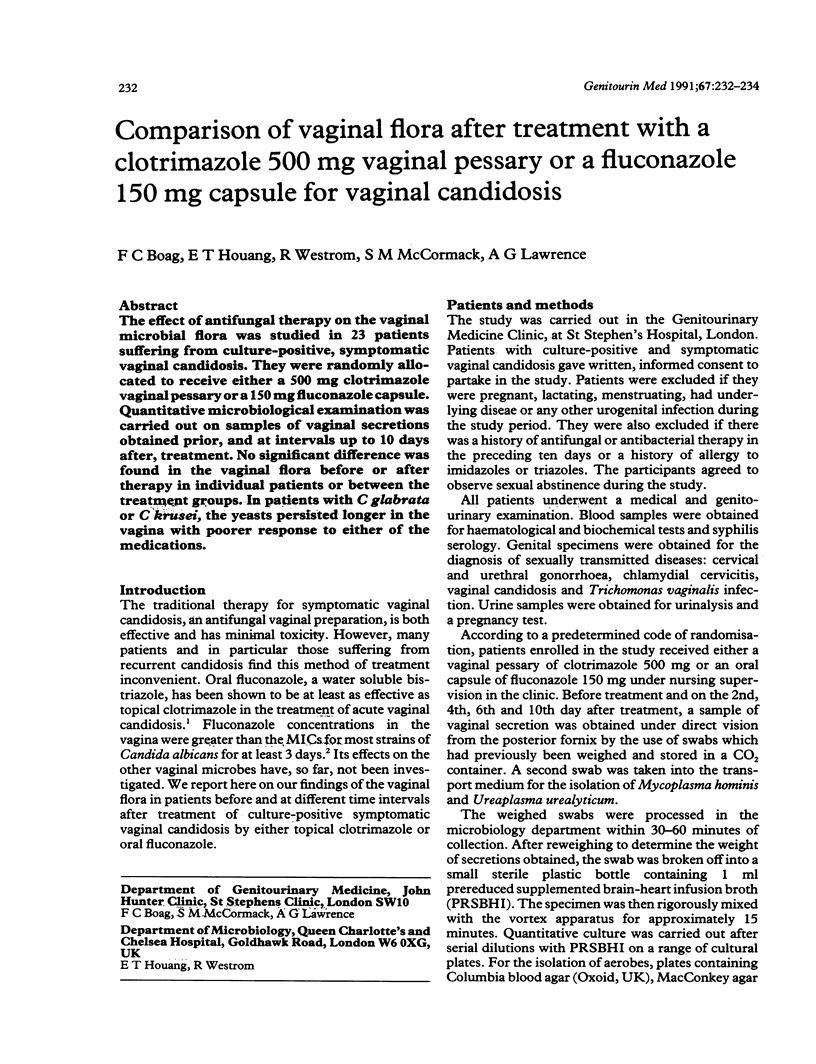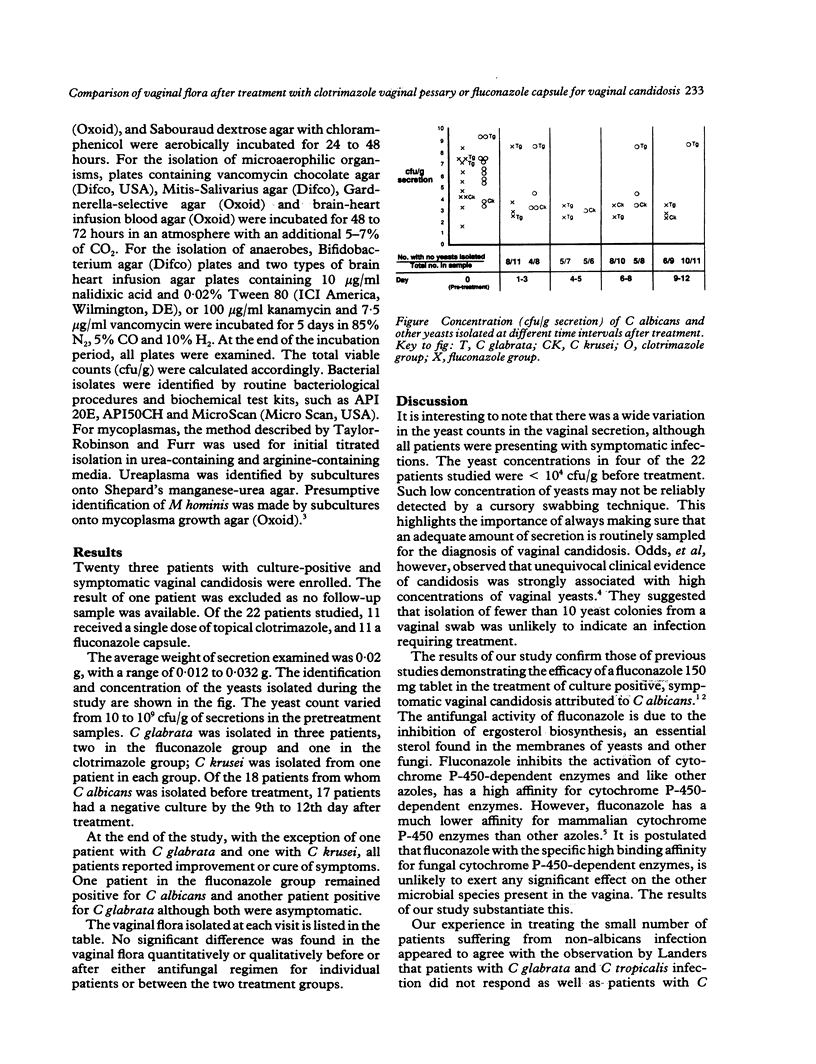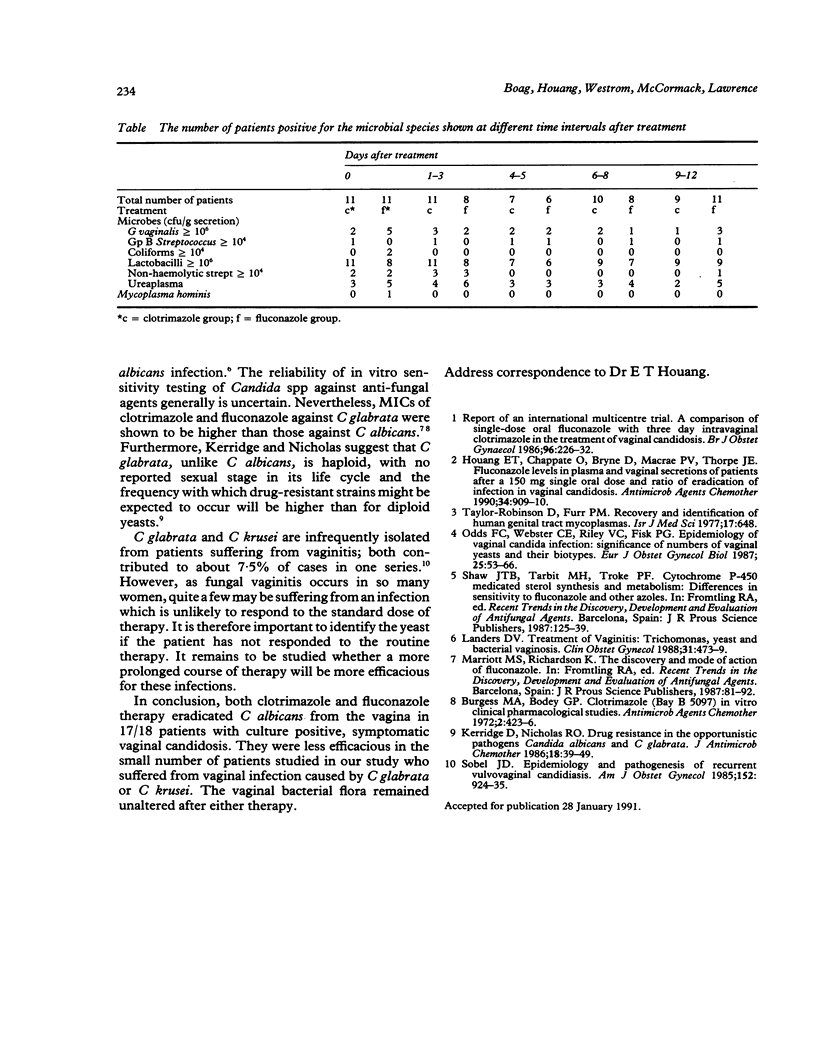Abstract
The effect of antifungal therapy on the vaginal microbial flora was studied in 23 patients suffering from culture-positive, symptomatic vaginal candidosis. They were randomly allocated to receive either a 500 mg clotrimazole vaginal pessary or a 150 mg fluconazole capsule. Quantitative microbiological examination was carried out on samples of vaginal secretions obtained prior, and at intervals up to 10 days after, treatment. No significant difference was found in the vaginal flora before or after therapy in individual patients or between the treatment groups. In patients with C glabrata or C krusei, the yeasts persisted longer in the vagina with poorer response to either of the medications.
Full text
PDF


Selected References
These references are in PubMed. This may not be the complete list of references from this article.
- Burgess M. A., Bodey G. P. Clotrimazole (Bay b 5097): in vitro and clinical pharmacological studies. Antimicrob Agents Chemother. 1972 Dec;2(6):423–426. doi: 10.1128/aac.2.6.423. [DOI] [PMC free article] [PubMed] [Google Scholar]
- Houang E. T., Chappatte O., Byrne D., Macrae P. V., Thorpe J. E. Fluconazole levels in plasma and vaginal secretions of patients after a 150-milligram single oral dose and rate of eradication of infection in vaginal candidiasis. Antimicrob Agents Chemother. 1990 May;34(5):909–910. doi: 10.1128/aac.34.5.909. [DOI] [PMC free article] [PubMed] [Google Scholar]
- Kerridge D., Nicholas R. O. Drug resistance in the opportunistic pathogens Candida albicans and Candida glabrata. J Antimicrob Chemother. 1986 Oct;18 (Suppl B):39–49. doi: 10.1093/jac/18.supplement_b.39. [DOI] [PubMed] [Google Scholar]
- Landers D. V. The treatment of vaginitis: Trichomonas, yeast, and bacterial vaginosis. Clin Obstet Gynecol. 1988 Jun;31(2):473–479. doi: 10.1097/00003081-198806000-00021. [DOI] [PubMed] [Google Scholar]
- Odds F. C., Webster C. E., Riley V. C., Fisk P. G. Epidemiology of vaginal Candida infection: significance of numbers of vaginal yeasts and their biotypes. Eur J Obstet Gynecol Reprod Biol. 1987 May;25(1):53–66. doi: 10.1016/0028-2243(87)90092-x. [DOI] [PubMed] [Google Scholar]
- Sobel J. D. Epidemiology and pathogenesis of recurrent vulvovaginal candidiasis. Am J Obstet Gynecol. 1985 Aug 1;152(7 Pt 2):924–935. doi: 10.1016/s0002-9378(85)80003-x. [DOI] [PubMed] [Google Scholar]
- Taylor-Robinson D., Furr P. M. Recovery and identification of human genital tract mycoplasmas. Isr J Med Sci. 1981 Jul;17(7):648–653. [PubMed] [Google Scholar]


